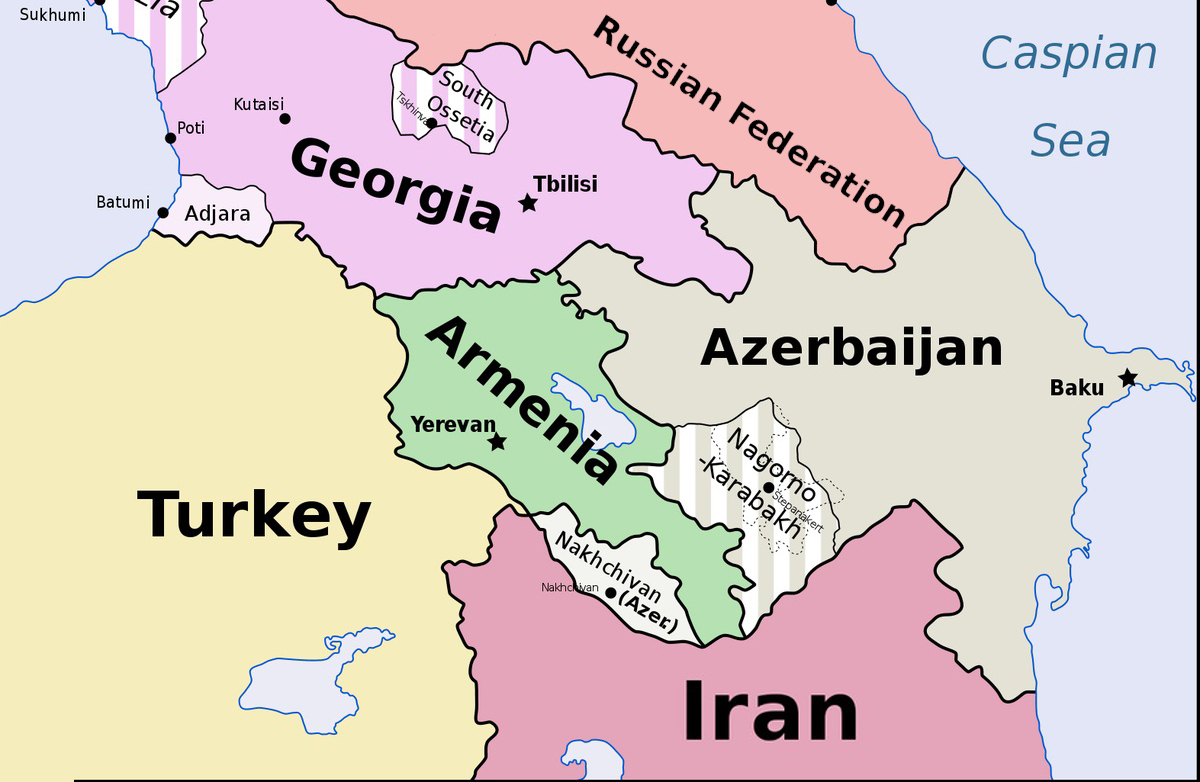After the collapse of the USSR and the end of the Cold War in the early 1990s, the rivalry between Russia and the US in fact was not over, despite the fact that Russia was in a state of social and economic decay and could not effectively take care of its foreign policy agenda. Since that time, the US has pursued two fundamental goals in the South Caucasus region. In the case of Russia, the “minimum plan” was the reduction of Russia’s influence and the maximum the expulsion of Russia from the South Caucasus region entirely. The second strategic goal was the containment or, if possible, the isolation of Iran (for example, by implementing approaches such as the “Goble plan,” which suggested exchanging part of the Syunik region of Armenia with Nagorno-Karabakh. That would have deprived Iran of its external border, making it dependent on Turkey, the US strategic ally and NATO member).
Since then, the establishment of Armenian-Turkish relations, as well as the settlement of the Nagorno-Karabakh issue, have been seen as key premises for limiting the presence of Russian armed forces in Armenia. At the same time, there was a belief that in that scenario Yerevan would be less dependent on Moscow, which meant a new opportunity to deprive Russia of its sphere of influence. Of course, Turkey was (and still is) a problematic ally, but it is better to have a problematic ally rather than such a rival as Russia in charge of the whole region. Naturally, in order to restrain or at least balance the two regional superpowers, essentially Russia, as well as Iran, Washington should bring a third player into the South Caucasus region, as the US was far away and didn’t have enough resources, tools and mechanisms to be directly involved in the region “personally.” That player would have to be a US ally, a powerful regional player, and have the ability to challenge Russia. Figuratively speaking, the USA should gain regional influence and enter the South Caucasus exclusively through Turkish gates (in fact, there are no other gates). In order to enter the South Caucasus region through the Turkish gates and gain influence, first of all, it was necessary to open those gates, i.e. to regulate Armenian-Turkish relations. A very good example is Georgia. Despite the fact that the collective West, led by the US, openly supported the Georgian revolution, today one of the main investors and trade partners of Georgia is not the EU or the USA, but Turkey.
Because of the closed borders and the absence of relations between Armenia and Turkey, it was impossible to manage the acquisition of Turkish influence in the South Caucasus at large. In general, almost all attempts to normalize Armenian-Turkish relations were initiated or openly sponsored and supported by Washington, starting with the G. H. W. Bush administration in the early 1990s. According to the prevailing opinion in the US, in order to reduce Russian influence in the South Caucasus region, it is necessary to settle all the conflicts in the region. If Armenian-Turkish relations were regulated, Moscow would have nothing to do with the security of the Armenian-Turkish border. If the Nagorno-Karabakh issue is settled, Moscow has nothing to do in Artsakh. Actually, it does not matter to Washington whether the Nagorno-Karabakh issue is settled within the framework of the principle of self-determination of nations or within the framework of territorial integrity. The important thing is the comprehensive and lasting settlement of the problem, as American officials are usually mentioning.
Despite the fact that the US never had any published strategy on the South Caucasus region, such as the “US Strategy for Central Asia 2019-2025,” the region is of the utmost importance. Undeniably, the US is more interested in the South Caucasus region as a whole rather than in deepening bilateral relations with individual states. After all, the South Caucasus is bordered by the main regional US ally, Turkey, and two main rivals and adversaries, Russia and Iran. Because of this regional approach, the US has appointed one representative as the Minsk Group co-chair, who is simultaneously involved in the “Geneva International Discussion” format created on the issues of Georgia, putting the existing conflicts in the South Caucasus into one complete picture.
This geography and regional approach provides the South Caucasus with serious importance for the US. Ideally, the US would like to have a situation and regional model in the South Caucasus similar to that of the Baltic states; that is, three states with no serious issues with each other, common foreign policy principles and bearers of the same Western values.
